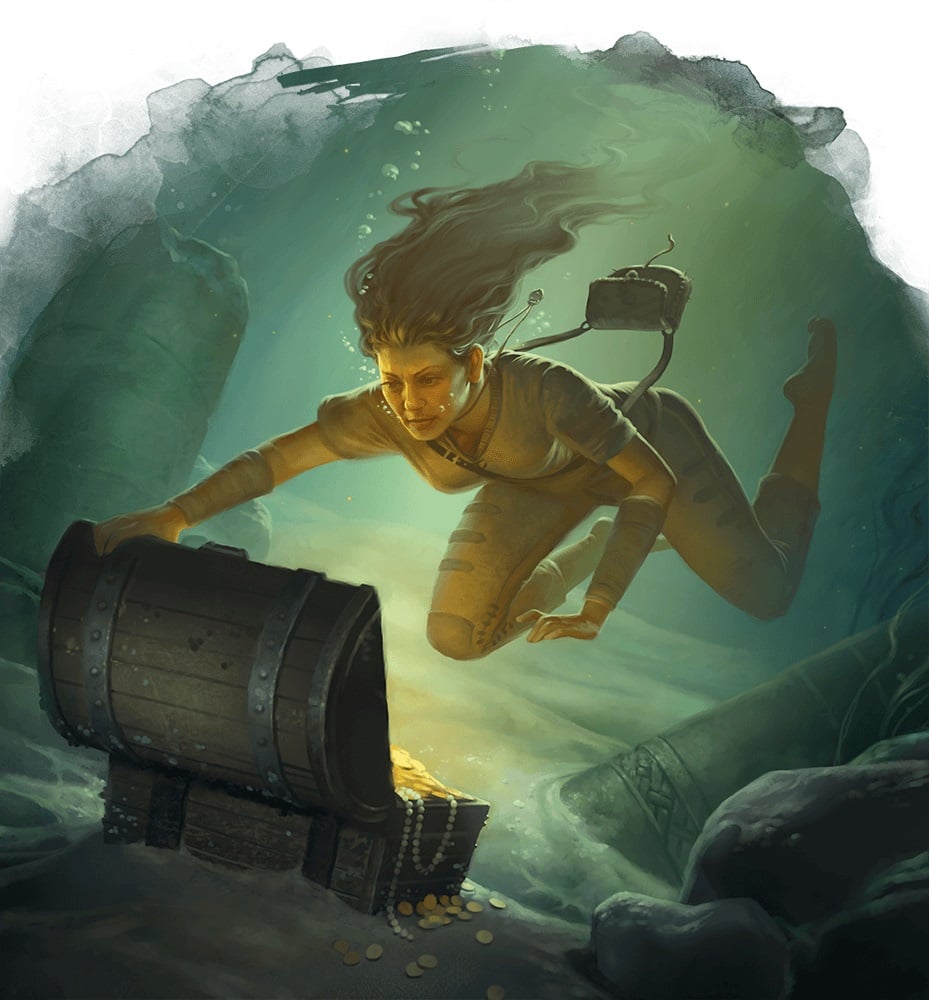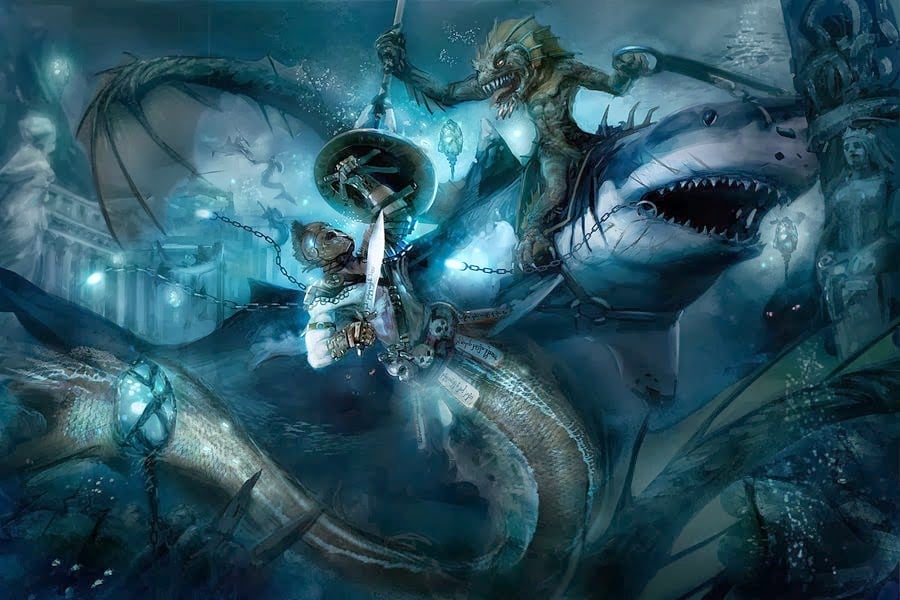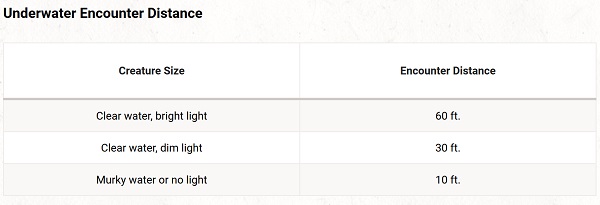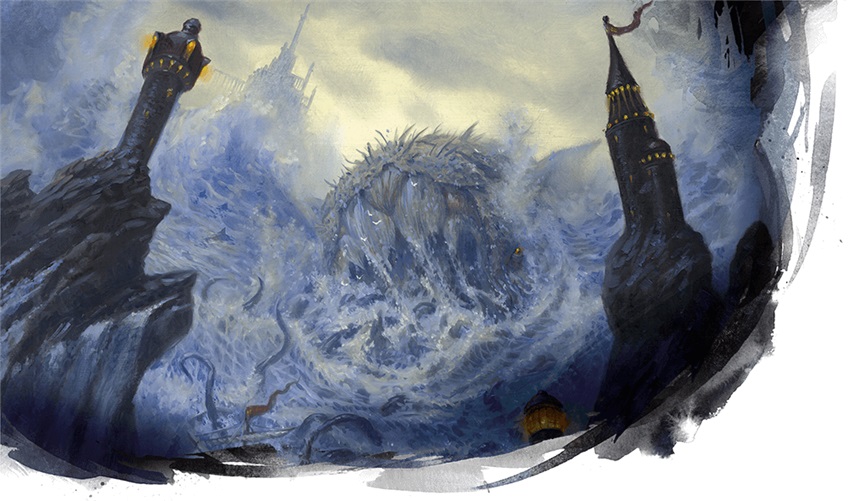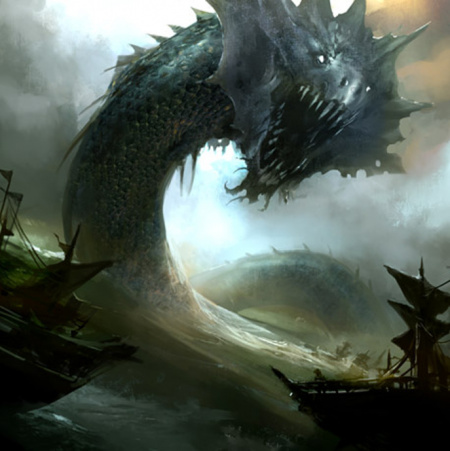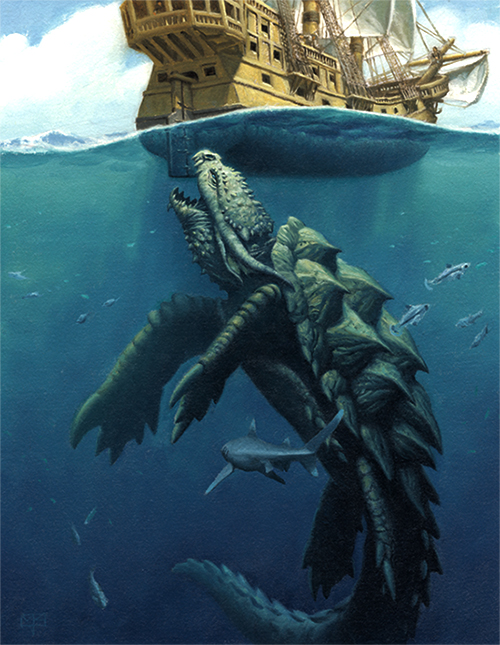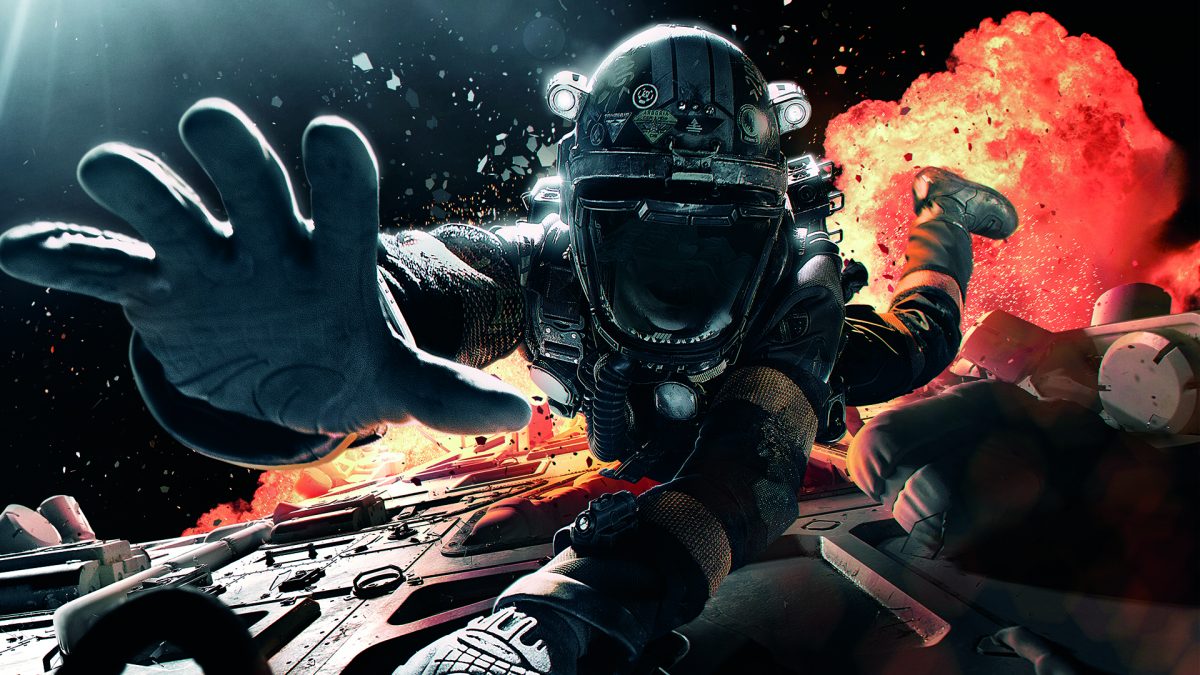D&D: Underwater Combat And You – Rule The Seas Above And Below

With a book on Boats in the works, it’s time to visit the rules for Underwater Combat. So grab your trident, crossbow, and list of spells that have interesting underwater reactions, and let’s get our feet wet.
Wizards of the Coast are truly living up to their name with a book on naval adventures due to release in Spring 2019. In keeping with the spirit of the current new release, we’re taking a look today at the rules for Underwater Combat, because knowing the rules can help you turn the tide in an underwater encounter gone bad. For those of you playing along at home, you can find all of the information in the Player’s Handbook and the Dungeon Master’s Guide, with a few helpful clarifications from Lead Rules Designer, Jeremy Crawford, along the way. Let’s dive in.
Underwater Combat
Now the Player’s Handbook has the most relevant rules for fighting underwater–suffocating, penalties and advantages to attacking; but the big picture for what being underwater means is in the Dungeon Master’s Guide. This includes encounter tables, rules for figuring out when an encounter starts, rules for swimming for extended periods of time, and the like. Let’s start with the simplest things–what exactly do you have to deal with when starting a combat underwater.
Before anything else you need to know: can you breathe? There are a number of ways characters might gain the ability to breathing underwater. Druids, Rangers, Sorcerers, and Wizards all have access to the 3rd level spell: Water Breathing. There are potions, caps, and rings that all might grant Water Breathing. You might be playing a Triton or a Sea Elf or a Lizardfolk (who can hold their breath for up to 15 minutes); which leads us to the other option. Holding your breath.
Holding your breath is straightforward, you can just do it. You can hold your breath for a number of minutes equal to 1 + your Con modifier, as soon as that timer runs out (or if you’re choking/being choked) you have a number of rounds equal to 1 + your Con modifier (minimum of one round), and once that runs out you are Suffocating, which is not where you want to be. According to the PHB, this means you immediately drop to 0 hit points (regardless of your previous total or any resistances/immunities) and you’re dying. You can’t regain hp or be stabilized until you can breathe. It’s rough folks.
After you’ve got breathing figured out you’ll want to figure out where everyone is when you start. Whether you’re having a random encounter or you’ve carefully plotted this out, it’s pretty easy. There’s a chart in the DMG under the Adventure Environments section that details different starting distances for fighting. This reflects the overall visibility underwater. You might be swimming along, and depending on how clear or murky the water is (and the lighting) your fight might not start until you’re right on top of each other.
These are some guidelines for figuring out what the light levels are like. Once you start fighting, light is light, and other than that, vision works a lot like it does on land. It’s up to the Dungeon Master to decide how well-lit the underwater area you’re fighting in is. It might be a brightly lit area surrounded by phosphorescent jelly-fish, nestled deep in a cavern, or the murk-filled lair of an aboleth, occasionally lit with eldritch malevolence (which might be dim or no light).
The other big thing to keep in mind is how movement works. Underwater Movement boils down to: do you have a swim speed? If so, great! If not–hoo buddy. Non-swim speed movement costs you double (so you move at half speed, effectively), and for every hour of swimming you do, you have a DC 10 Constitution save, or you take on a level of exhaustion. Doubly so if you are swimming deep: once you’re deeper than 100 feet, each hour spent swimming counts as 2 hours for determining exhaustion, and out past 200 feet, the rate doubles again, with each hour counting as 4.
But again, none of that matters if you have a swim speed–that implies you’re adapted to the depths. Mobility underwater is perhaps even more important. DMs, if you are looking to present a challenge to your skirmishers, or high-level characters who always seem to make it to the squishy monsters before they can deal their damage–put your players underwater.
If you really want to spice things up, you can through in the rules for frigid water, where after you’ve been immersed in it for a number of minutes equal to your Con modifier, you have to make a DC 10 Constitution saving throw or take on levels of exhaustion. Resistance or immunity to cold can negate this, but otherwise, it’s rough out there.
Alright now that we’ve figured out the many ways being Underwater might kill you, here’s how it works once you start fighting. To start off with, anyone or anything that’s completely immersed in water gains resistance to fire damage. Whether you’re under the sea, or just in a deep enough pool of water to cover your body, you can gain resistance to fire at a moment’s notice by dropping in.
This means that spells like Fireball works just fine. You’re just resistant to it–but you can still blast people with it. Even spells like Flame Strike or Wall of Fire work. Hey, speaking of magic, how about spellcasting underwater? Spells with Somatic and Material components, sure, no problem, but what about verbal components for your spell?
Short answer: yes. Long answer: yes, but if you’re talking a lot you’re not holding your breath and that’s something to be careful about, depending on the DM at your table.
Fireball always works at MY table
Okay so you have a swim speed and weren’t a wizard anyway–here’s what you need to know. As with most things underwater, having a Swim Speed from somewhere or another makes a difference. If you have a swim speed, you don’t have to worry about melee attacks, but if you don’t have one, you’re at disadvantage on all melee attacks unless you’re using a dagger, javelin, short sword, spear, or trident.
And if you’re looking for ranged weapons–you auto miss beyond a weapon’s normal range (and are at disadvantage within the normal range) unless it’s a crossbow, net, or weapon thrown like a javelin. So whether you’re getting excited for the new Undersea expansion coming later this year, or just looking for an environment that’ll help shake up your encounters, consider taking your adventurers underwater–it’s a great chance to get players used to preparing for adventures, but you’ll want to be familiar with them.
Happy Adventuring!

